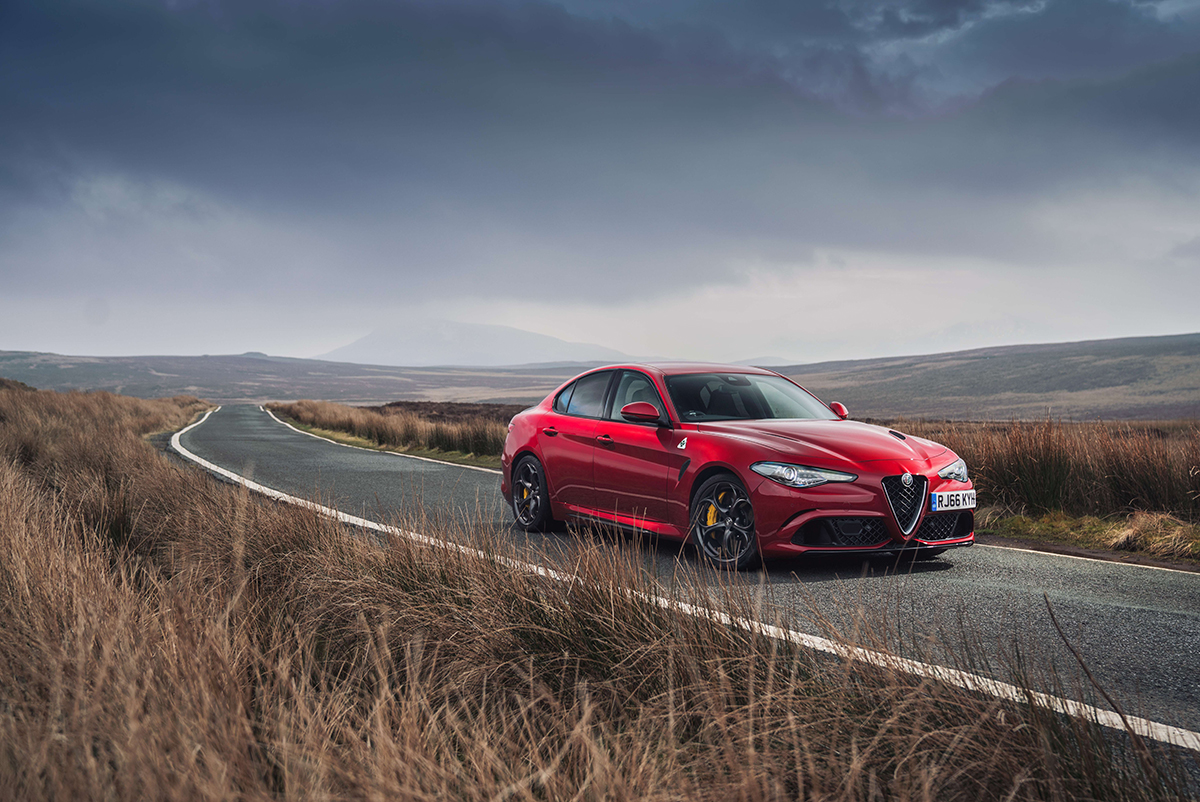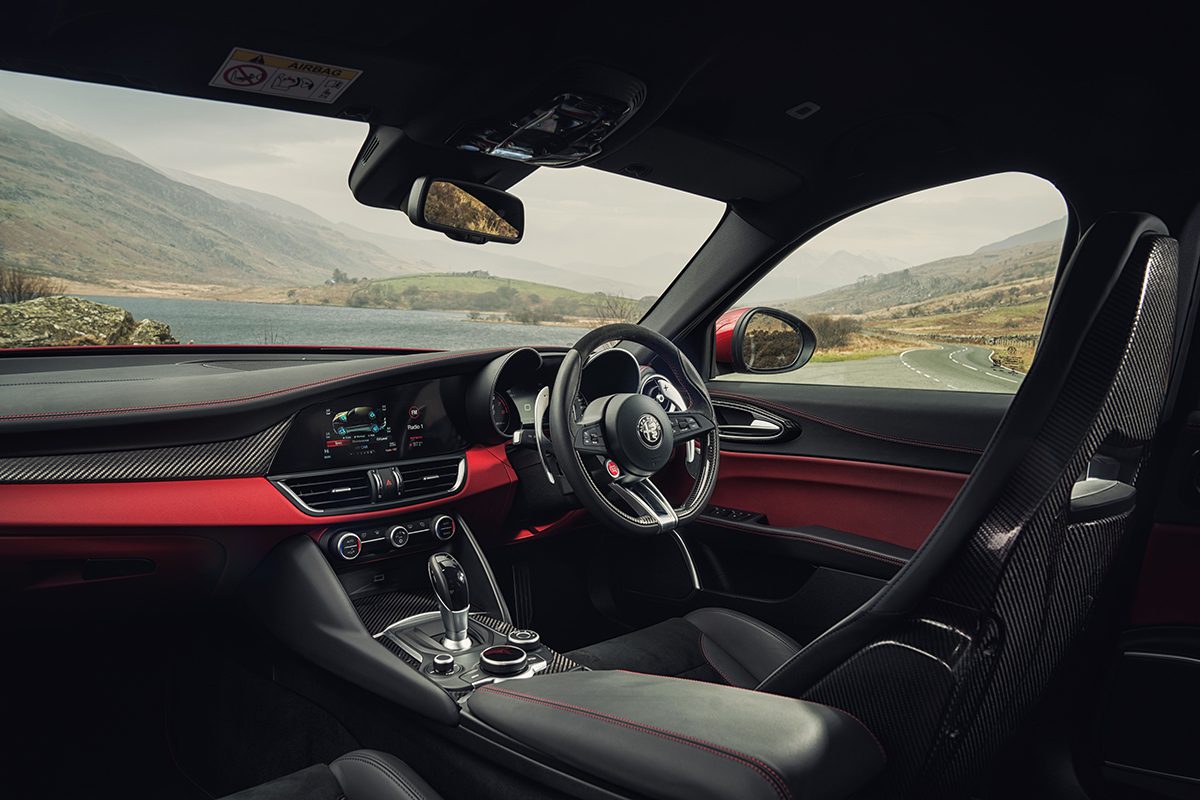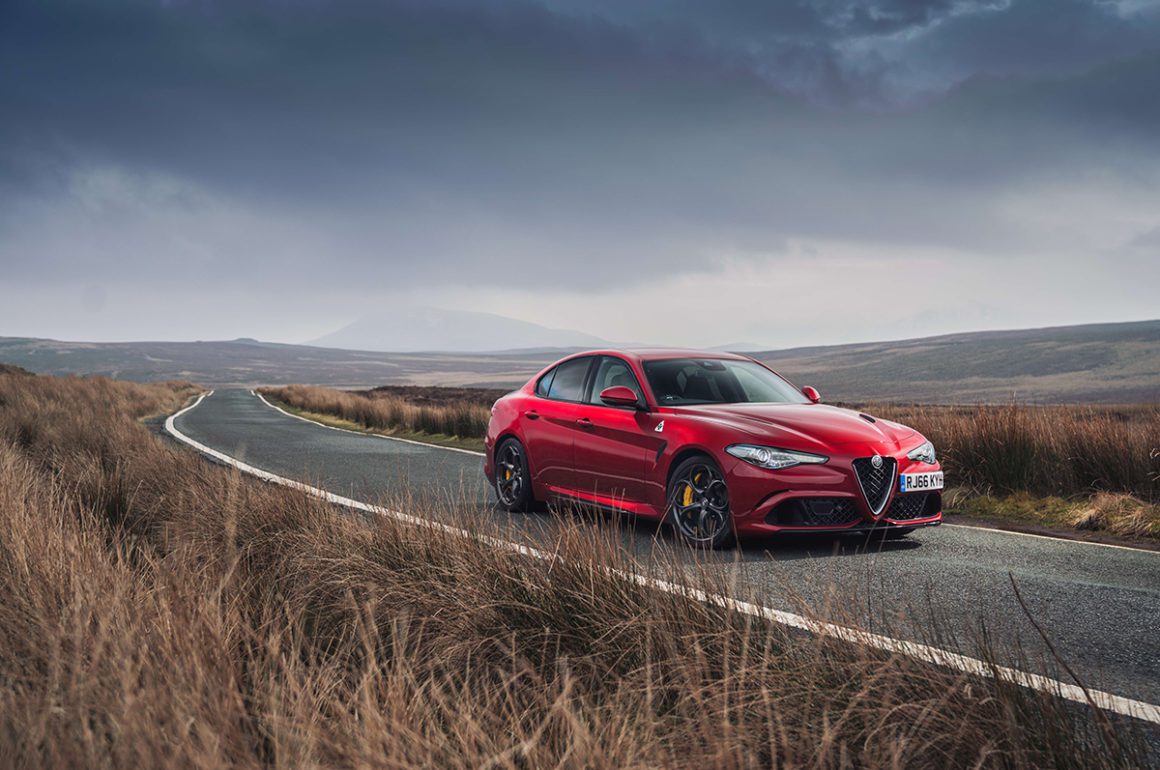
Alfa Romeo Giulia Quadrifoglio
In the second of our supercar reviews, we test drive a road-burning Italian sports car suitable for all the family: the Alfa Romeo Giulia Quadrifoglio
One of the great conundrums for any current car enthusiast involves trying to work out why the country that produces the greatest supercars in the world has in general not produced anything nearly as outstanding to drive in the fast saloon car category.
If you’re looking for a racy two-seater, you’ll look first at Ferrari and Lamborghini. But if you want to carve similar performance and passion for four or five people, you would, in general, need to look to Germany’s Porsche, Mercedes-AMG, and BMW.
Follow LUX on Instagram: luxthemagazine
Meanwhile, Alfa Romeo were world-beating sports cars before Ferrari was even born. Its more recent history as (largely) a maker of saloon cars has been less exciting.
Alfa’s heritage still resonates strongly: as soon as the new high-performance Giulia Quadrifoglio saloon was announced, I had texts from excited Ferrari owners wondering if they had found their next potential family runaround in this four-seater high-performance car.
We took delivery of our Giulia in Zurich. The Quadrifoglio is the high-performance version of the Alfa saloon, and the first thing to note: it looks mean. Beautiful and flamboyant alloy wheels are wrapped in Corsa racing tyres, aimed for use mainly on the track and in dry weather. The car may be a four-door saloon, but it looks like it means business. It has a wide shouldered stance, and the racy feel continues inside, where the combination of bucket seats, carbon fibre and a focused dashboard say supercar more than family car.

So, the Giulia QF can talk the talk, but that’s the easy part. Can it also walk the walk? We are, after all, in an era where any good family saloon/sedan is comfortable, fast and capable. Standards are high, and if you are pitching yourself as both a practical, comfortable car and a sports car, it has never been harder to be at the top of the pack.
First impressions are very racy. This is a car with steering out of a two-seater track machine, and it is extremely bracing. Every millimetre of movement of your hands translates into an equivalent change of direction from the wheels, something that does not often happen with saloon cars which tend to have a lot of safety margin to avoid inexperienced or inattentive drivers wheeling them off the road in a moment of low concentration.
Read more: Behind the wheel of the world’s most powerful supercars part one
The engine sounds glorious; it is a turbocharged V6 with a feeling of being tuned for both sound and power. In a future era where cars are electric or hydrogen powered, the melody of a Giulia QF will be sorely missed. (And before this prompts anybody to write in about greenhouse gases produced by conventionally engined cars, a proper audit of the carbon footprint of every component of an electric battery car should bring you back down to earth.)
So, sharp steering, fabulous sounding engine, fun interior – and how does it drive? The Giulia zinged down the back roads above Lake Zurich with the kind of gusto and brio missing from many of the highly capable but emotionless fast saloon cars on the road today. This is a car that, like some kind of Alpine hound, wants to sniff out twisty roads with delicious curves and power through them, challenging the driver to get everything perfect, balancing their way through the corners before powering outwards
and upwards.
It’s very fast, too – but that is really a given for this category of car, and in a straight line it is neither perceptibly slower nor faster than any of its rivals. It’s more about the way it goes about doing its business with a sense of joy.
But is there a flipside to that, in terms of comfort and practicality? The short answer is no, not really. That Giulia is a good solid motorway cruiser, perhaps not quite as magisterially comfortable as its German rivals, but certainly not flawed. The boot is big, the interior is spacious, although the ride is a little bit bumpy on the big wheels and racing tyres. If you wanted to sacrifice a bit of its alertness for more smoothness, you could swap to Michelin Pilot Sport 4 S tyres, which in our experience come close to giving the best of both worlds.
But given that this is a car aimed at enthusiasts, the sharpness is really no sacrifice to make. For driving your family and friends around with a big grin on your face there really is no better alternative.
LUX Rating: 18/20
Find out more: alfaromeo.co.uk
This article was originally published in the Spring 2020 Issue.







Recent Comments